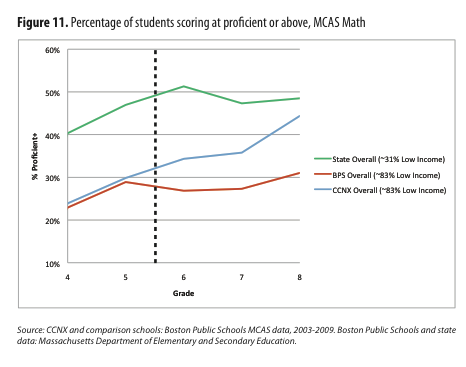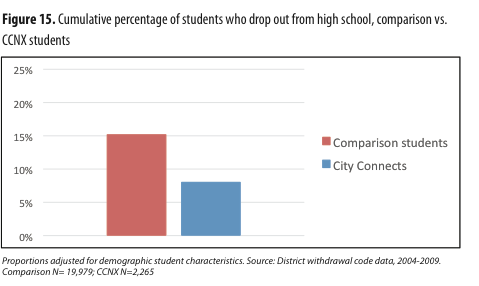The notion of comprehensive education is nothing new, yet with all of the education reforms and testing initatives, has it fallen even further to the wayside? Are our current curriculum standards robbing children of a real education, in favor of No. 2 pencils scratching on standardized bubbles? Many consider John Dewey, the late nineteenth and early twentieth-century philosopher and advocate of progressivism to be the father of student-centered learning. Dewey championed the idea that schools should address a broad spectrum of student needs, rather than drill rote memorization of facts into students’ heads. The addition of school counselors, special education programs, advanced courses for the gifted, and student support services like positive behavior interventions would all fall under the realm of whole-child educational programs that schools throughout the nation have implemented for quite some time. According to the Association for Supervision and Curriculum Development, whole-child education should encompass the following:
- Every child comes to school healthy and is supported in his or her pursuit of good mental and physical health through physical education, health, and wellness classes and activities that enrich their lives.
- Every child learns in an environment that is free from discrimination, upholds the tenets of social justice and equality, and provides opportunities for students to feel valued and respected.
- Every child is actively engaged in their learning, which is facilitated by hands-on and project-based learning, community service, extracurricular activities, and other programs that extend learning beyond the classroom.
- Every child participates in personalized learning programs that meet their unique academic, social, and emotional needs. Teachers, administrators, and other school personnel welcome parents and other family members as valuable assets to the support team.
- Every child participates in curricula that challenge them to develop problem-solving skills, critical thinking skills, and an understanding of technology, language, and culture so they are prepared to continue their education in college, are ready for a career, and are able to be an engaged and informed citizen.
While schools have for a long time sought to implement programs and practices such as these, the testing-heavy environment brought about in the 2000s by No Child Left Behind seems to have gone a long way in actually doing the precise opposite. As budgets have shrunk, so too have the course offerings and enrichment programs that allow children to be creative, such as art, or that allow them to be active, such as P.E. Some schools have even cut recess time in favor of reviewing for high stakes exams, while others have slashed their lunch programs in order to funnel as much of their budgets as possible towards test prep materials and other resources aimed at getting the largest number of kids past the point of proficiency.
Yet, these ram and cram methods do not take into account the vast array of social and economic issues that prevent children from succeeding in the first place. Kids of immigrant parents who cannot read English are not going to fare well on a state exam, no matter how diligent his or her teachers are in reviewing for the test. Similarly, a child who comes to school hungry is not going to have the energy he or she needs to focus on learning for seven hours a day. What happens then is that school becomes something like a factory, where children cram all year in the hopes pumping out correct answers on their high-stakes exams. And even the kids who do succeed in obtaining proficiency don’t have all that much in the way of applicable knowledge and skills once they leave public school. Thus the need for comprehensive education programs is quite high.
Today’s iteration of whole-child education is one that seeks to build a system of programs that address all aspects of a child’s development, from 21st century job skills that are relevant to today’s workforce to mental health programs that help children build self-esteem. Additionally, these programs help children build qualities that are important for success in life: integrity, interpersonal skills, self-knowledge, creativity, and initiative among them.
Comprehensive schools make the acquisition of these qualities possible by extending support services that children from middle and upper class families enjoy to poor children, particularly those in urban areas. These services vary widely from school to school, but generally speaking, they involve programs that provide for a child’s nutritional, physical, socio-emotional, literacy, and language needs. Together with traditional educational programming, enrichment activities, and support services such as tutoring and mentoring, the ill effects of poverty on a child’s ability to learn can be overcome.
The end result of all these programs is equitable education for all. But in order to achieve that result, schools must have active cooperation from parents and the support of the community. To move away from rigid teaching and learning practices to cross-curricular educational experiences that set the standard for learning and achievement at a high level is a difficult task. It’s even more difficult to build the bridges children need in order to reach that high bar.
Community Engagement is Key
The movement towards whole-child education rests squarely on the ability of school personnel to engage with parents to build a system of support that meets the diverse needs of every child in the school. This community-wide effort means not just involving parents, but also utilizing the assets available from local non-profits, civic organizations, and area businesses. This approach, which is being implemented on a large scale in the New York City Public Schools, implements mental health services, family counseling, homework help, and other support programs with the help of community members.
Each of the 40 schools in New York City’s program will be given grant funding to pay for the programs they utilize to meet their students’ needs. With input from all stakeholders – from students themselves to CEOs of local corporations – each school will offer services that are specific to their student body. For example, a school in the Bronx with a large number of non-English speaking students could utilize their funding for more English as a Second Language and English Language Learner courses, whereas a school in Brooklyn that has a high rate of truancy would use their funding for before and after-school enrichment programs to keep children engaged. By drawing on the strengths of the community, comprehensive schools can address the most serious problems their students face and reduce barriers to achievement.
Successes in Boston
For well over a decade, students in Boston have had access to support services provided by City Connects. All City Connect programs are devised with a comprehensive model in mind - that a student’s learning, both their ability and desire to do so, are heavily influenced by a wide range of factors:
- Social, emotional, or behavioral challenges
- Academic needs and abilities
- Physical health
- Family life
What City Connect has been able to do is form collaborations with children, teachers, and parents to develop a system of support that not just accounts for each child’s unique needs, but employs interventions to address them. Children who exhibit behavioral difficulties are connected with a counselor to determine the causal factors of the child’s behavior. Children who struggle in a certain subject area are provided with tutoring and mentoring services in order to address their academic deficiencies. Children who have asthma, diabetes, are obese, or suffer from other health-related conditions are referred to appropriate medical care and take part in health and wellness programs to reduce negative health-related factors on their learning. Lastly, City Connect gets parents and guardians involved in education by facilitating open dialogue between parents and teachers.
The results from this program demonstrate how well comprehensive schools work. Students that received support from City Connects in elementary school are more likely to be proficient on Massachusetts’ statewide tests. Children involved in the program significantly outperform their peers on the Stanford Achievement Test in elementary school as well.

They are also less likely to be truant from school and their high school dropout rate is 50 percent lower. It is important to note that these positive impacts are long-lasting – children who receive support in elementary school continue to show improvements in achievement all the way through high school and beyond.

Nebraska Loves Public Schools
With a recent wave of immigrants coming to the state, Nebraska found itself with an influx of students who face poverty, linguistic barriers, and a lack of coping skills. To meet the needs of it’s increasingly diverse student body, Nebraska public schools adopted a comprehensive approach to education that seeks to address these issues. As in Boston, schools became a hub for much more than reading, writing, and math – students receive social support, English language learning courses, health check-ups, and individualized instruction to support and extend each child’s ability to learn regardless of their academic or intellectual capacity.
In particular, Nebraska schools have adopted an anti-poverty strategy to help combat the negative effects that poverty has on a child’s ability to learn. Much of the foundation for a child’s success in school is built at home in the pre-K years from the words they hear and the books their parents read to them. Yet, for the 40 percent of Nebraska children who live at or below the poverty level, this kind of early learning is not a reality.
The state’s Ready for Kindergarten Program seeks to help these low-income families prepare their children for academic success long before their child walks through the doors of their elementary school. Students and their families receive support services that range from literacy improvement to enriched playtime. These programs are evidenced-based and show a real and lasting impact on student achievement: Children who receive these services are much more likely to graduate from high school, are more inclined to go on to postsecondary education, are better equipped for a successful career, and are much less likely to become involved in the criminal justice system.
Other Districts Make Comprehensive Supports a Priority
In Florida, children from migrant and poverty-stricken families receive free breakfast and lunch during the summer months, delivered by their local school district. While kids eat, their parents, most of whom have little or no English speaking, reading, or writing skills, can take courses to improve their language abilities.

Free lunch programs in other cities, including Boston, Chicago, Dallas, and Indianapolis, have been expanded to all students regardless of income, a move that has financial benefits for the districts, but social benefits for students as well. Without the stigma of free lunch attached to a specific group, more kids get the nutritious meals they need in order to improve their school performance. These wraparound programs are a prime example of meeting the needs of the whole child, not just the academic needs their teachers identify in class.
Looking Ahead
Research has long showed that wellness programs create more productive and happier workers. Comprehensive schools are essentially applying that idea to education: If students are healthier and happier, have access to support programs such as fitness activities and mental health screenings, and are able to reduce stress while increasing their interest and engagement in their work, their ability and desire to achieve will increase. Helping children to live well is not a luxury that can be cast aside because budgets are too tight – it is a fundamental component of educating the next generation of American leaders.
In the end, comprehensive education is a means to provide much more than rote facts about past presidents, basic math skills, and an appreciation for team sports. It is a method by which children are given the tools and resources to overcome obstacles in their lives that may otherwise derail them from attaining their career goals, going to college, or even graduating from high school. The difficulties presented by hunger, poverty, mental illness, and family dysfunction can all be addressed at school if the whole-child approach is taken.
This is not to say that comprehensive schools are the answer to all of our problems. Racism, sexism, poverty, and crime will no doubt continue to pervade our society despite our best efforts to diminish their impacts on our schoolchildren. But what is certain is that attending to the needs of the whole child is a far better method of undertaking education than focusing solely on a single test score at the end of the year. Based on the results districts with these programs have gotten thus far, the added time, expense, and preparation are well worth the expense.











